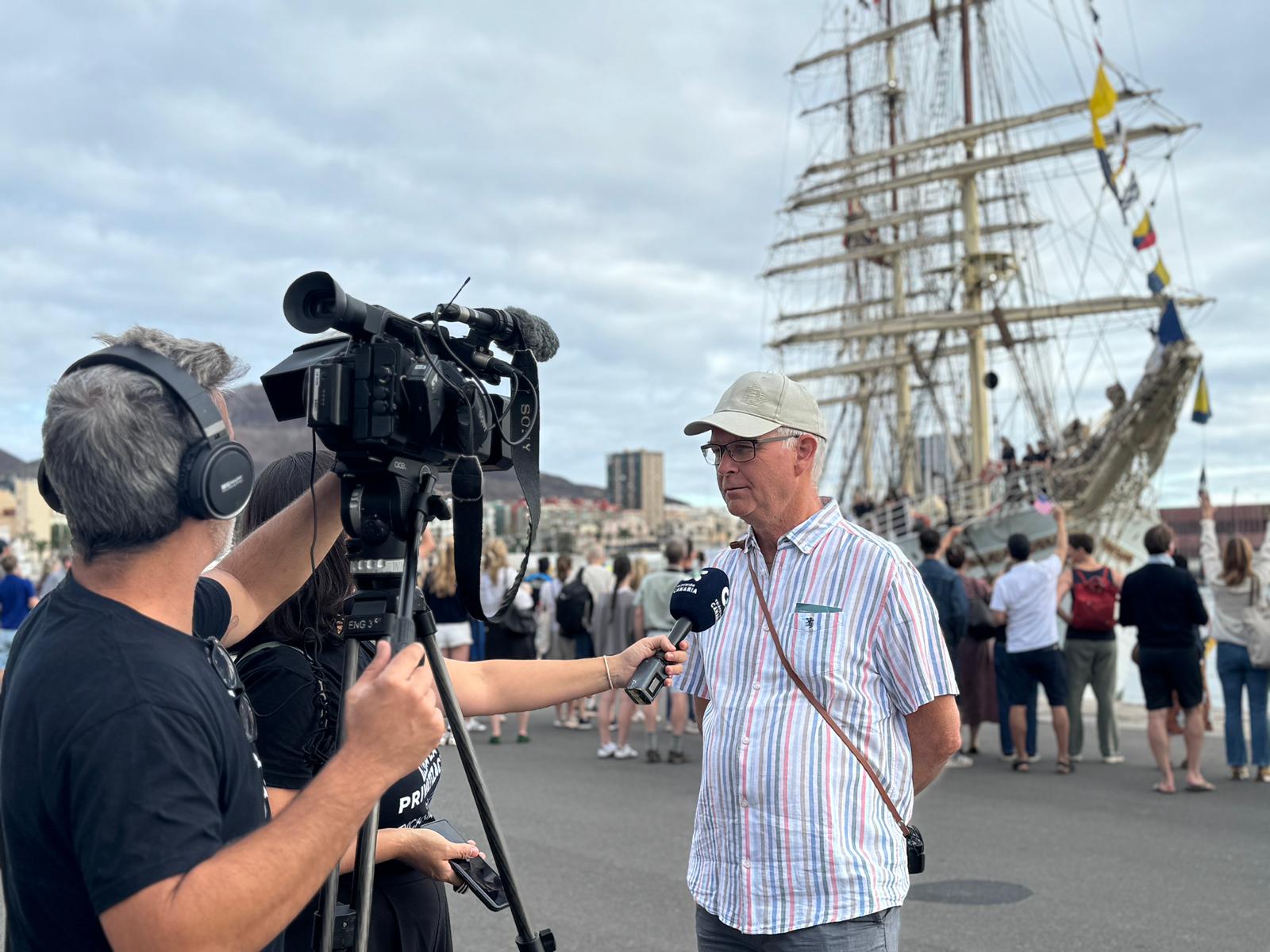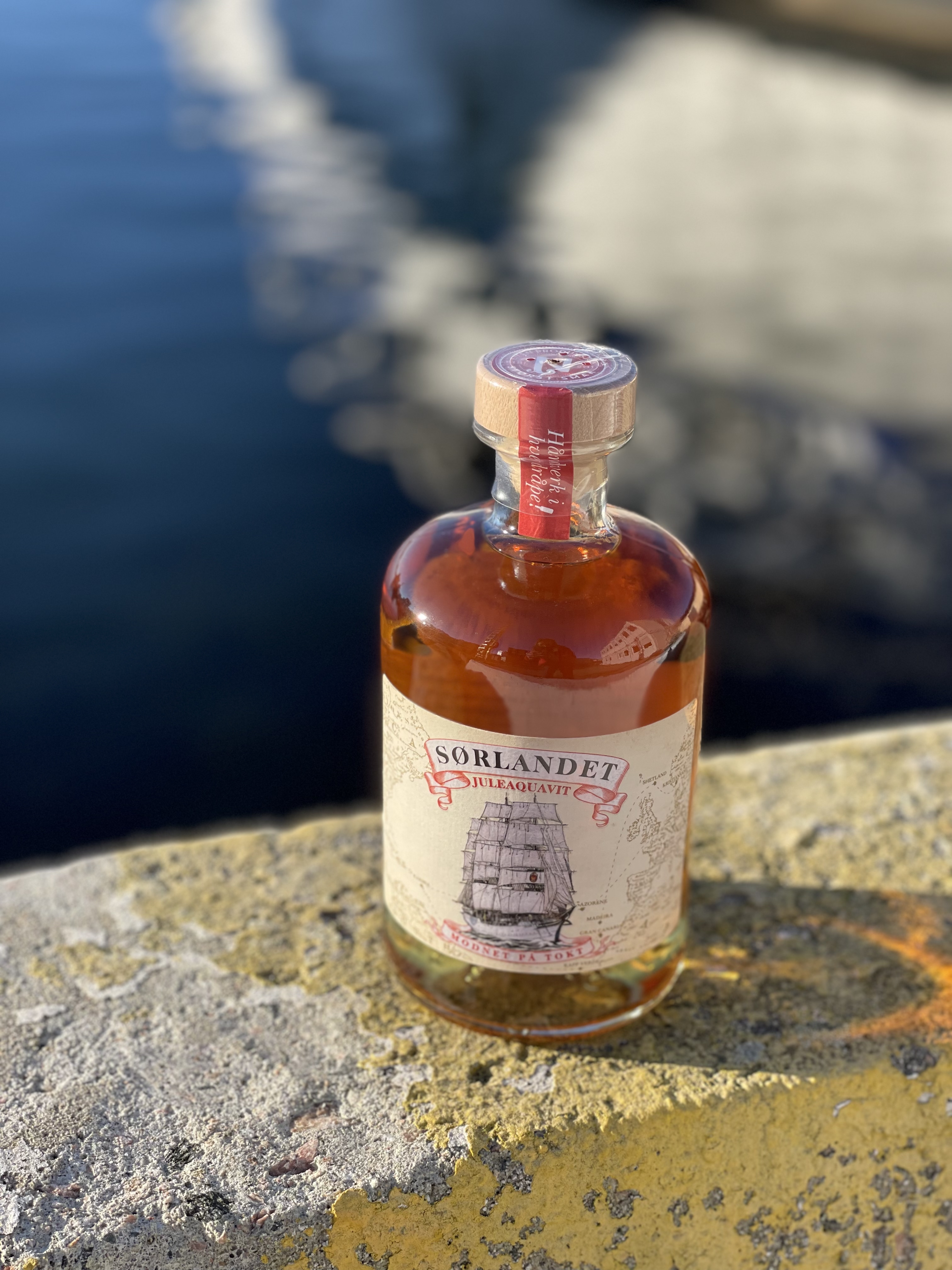School under sail
When the late shipowner OAT Skjelbred set aside £25,000 as a gift with the aim of building a school ship for the region, he also expressed a specific purpose with his gift. Kjell Rosenberg, who for so long was a teacher on board Sørlandet , has given some thought to this.
A sailing ship was to be built to train young bous to sailors. Skjelbred also shaped out certain thoughts about the concept of training. In these he emphasized practical skills, personality development, knowledge and attitudes. Almost symbolically, this was expressed in statutes that were later designed: When signing off after five months voyage each student should be handed a Bible and a coin. The godly Skjelbred wanted this to be the boys' starting capital in life," Rosenberg says, continuing:
After the first years of operation, it was quickly clarified that the level of knowledge of the many seaboys was highly uneven, much like their schooling in the village and the city had been of quality and duration. Captain Lindeberg found that even such simple things as the the Post Office's forms, a simple application and modest knowledge of society were unknown concepts for many. The captain himself began by teaching them filling in forms, writing applications and telling on-/off-signing and other useful knowledge for a sailor in the merchant fleet.
His experience of this he discussed with the late school director Gjøstein, who had plans for a continuation school on board and had it approved by the school authorities and stated that the school received state grants for operating under the current law for what was since called "framhaldskole". The later school directors Fjermeros and Leirvåg always looked with good will at "Sørlandets" Framhaldsskole.
From 1930 the school got started. The first teacher was later rector, Dr. Philos. John. N. Tønnessen. There are hardly many sailors who have had such a knowledgeable and thorough man as a teacher. As a linguist and maritime historian, his knowledge was particularly extensive, and he also had a rare ability to socialize with youth.
The professional district for the floating school was as for most "framhaldsskoler". The emphasis was placed on Norwegian and mathematics, - called "regning" at the time ... In orientation, the school was fairly free. It was often seafaring geography with an emphasis on shipping, production, shipping and cargo over sea to port. History was the saga of shipping. Physics is also ships, ship machines, plates and spun, rust and paint. How can your job be done better when you know why it needs to be done like this?
English, the language of sailors rather than anything else, were also subjects on board. It received good stimulus, not least by the voyage to Chicago in 1933. The teacher at the time was Aksel Akselson who also wrote a book about the cruise.
He was succeeded by Kristen Raustøl, cand. theol. and later priest. He mustered off in 1939, last voyage Before the war came with requisition from the Norwegian navy and conquest of the Wehrmacht in 1940. The ship's habit of war years and the restoration in the post-war period is an interesting and exciting chapter, a story of optimism, windshipability and good seamanship until a day of joy in May 1948 when the ship was finished to receive a new pupil litter and be able to embark on voyage to Denmark and England, - newly overhauled and shiny of varnish and glossy paint.
"A beautiful symbol of the reconstruction," said Bishop Smemo.
Teacher in the first weeks after 1 May was the late school director Helge Rosenberg about substitute for his brother Kjell Rosenberg who first had to do away with his teacher exam and came on board on 25 June. A few days later, the ship stood out Tromøysund on course for Newcastle. After a week's stay there, there were arrivals in London where the Olympic Games were discontinued for the first time in the post-war period.
In the shipping country of England, sailing ships have a special appeal to an enthusiastic general. Both in 1948 and later years this was expressed in an overwhelming hospitality both privately and publicly.
During six summer voyages and several winter courses, summers with a five-month duration, had the undersigned position of theory teacher on board. Because of my old first mate's certificate, I also patterned as a sub-officer and at times took guards. The years on " Sørlandet " together with youngsters eager to learn, and a group of skilled employees on deck, machine and in galley stand for me as my best working years. It is largely also due to the legendary Captain G. Selmer Lindeberg, a man you do not forget when one has come to know him:
His versatile knowledge and brilliant memory with storytelling joy and championships in the art of replication, spacious and broad-chested. As a sailor, he was responsible and caring and never took a risk to his expensive "cargo" with 90 youngsters on board.
Of us who sailed with « Sørlandet » in the happy post-war years, there are not many left now: Later captain Nils Arntsen, mate Sverre Syvertsen, carpenter Thomas Tobiassen steer Leif Larsen, machinist Rolf Olsen vii I would like to send a greeting with thanks for pleasant company and for good memories of a young and cheerful crew and about our old shipmates who have stood watch, says Kjell Rosenberg.
- Source: " The Ship Sørlandet - a school under sail",
published by the Foundation The Ship Sørlandet in April 1987.
Editor: Helge Svein Halvorsen
Other articles in this series:
- The gift letter that became a national cultural treasure
- A school of a lifetime
- Discipline - order - seamanship
- They came down from the rig and manned our fleet
- School under sail
- "We became men"
- Our youngest Vikings
- "Continuation School" for future sailors
- War, occupation, reconstruction
- Inspiration in art
- Over and out as a training ship
- In 1956, at the age of 14, he took part in the Tall Ships Races
- In triumph - and hurricane
- Famous names behind the ship


.jpg)




